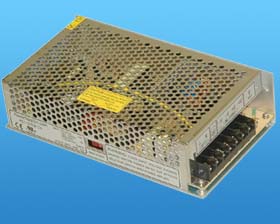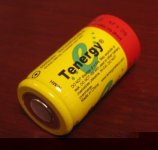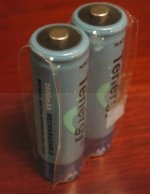fitek
1 kW

Despite some advice to just spend away on expensive batteries, I've decided to buy cheap NiMH, NiCad, and Lithium batteries and let them go at it head to head. I placed orders for 9 batteries.
All batteries are 70 cents/watt-hour or less (except the lithium, which are 71 cents) in quantities required for a 48v ~8ah pack.
Sub C NiMH: 3.5Ah, 3.8Ah, 4.5Ah
AA NiMH: 2.6Ah
C cell NiMH: 5Ah
D cell NiMH: 8Ah, 10Ah
D cell NiCad: 7Ah
lithium ion 18650: 2.2Ah
Some are Tenergy brand, the rest are mystery meat.
Testing Goals
I'm running my bike at 24V. 30A provides enough power for me. If these cells can put out 2C and survive, I'll be happy. The Sub-Cs are rated up to 10C. Therefore, I propose the cells be tested at the following discharge rates:
10C
5C
4C or 3C
2C
1C
0.5C
I need to charge my bike in about 6 hours. So 0.2C charge rate would be sufficient. Most of the cheap chargers seem to only go up to 2A so this is about right for an 8Ah pack. Might be fun to try faster charge rates.
Testing Apparatus
My accomplice and I have a 2 channel digital storage oscilloscope at our disposal. It can record for 2.78 hours. Hence the 0.5C lower discharge limit. For charging, we have some troubles, since the scope can't measure over a long enough interval. Instead an LM431 shunt regulator will probably have to do, signaling a stop watch of some sort that the charge is done.
We're still working on the circuit to make all this happen and input is appreciated. http://www.zeva.com.au/tech/LiFePO4.php has a schematic for a system using LabView, but it's a bit more than seems necessary here.
Comments and suggestions welcome











